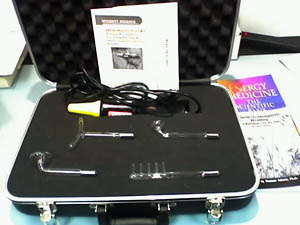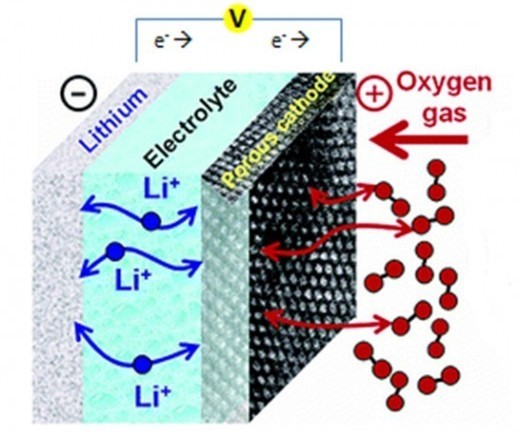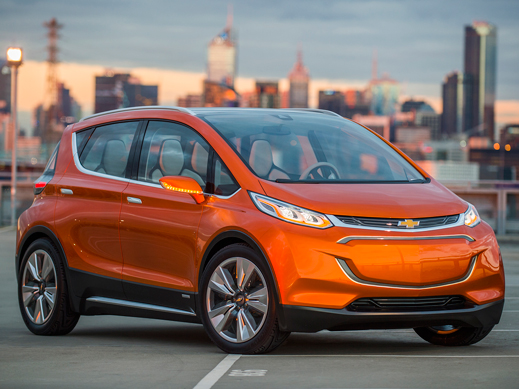|
|
|
Greetings!
This past week
we received a testimonial for our device, the EM Pulser from
an Integrative Medical Student in BioMed. He had a neuropathy in
the cervical C5/C6 induced by a sport accident. Within "a few
days the pain was gone" from using the EM Pulser and he reports
"feeling much better." Since the client will soon be a
medical doctor, he is now highly motivated to study Energy Medicine,
biophysics and bioelectromagnetics, as all medical students should be
and he asked us which books to read. Another
customer stated, "some good news re the EM Pulser and my
condition - despite only using it for 3 weeks I've noticed a marked
improvement in my osteoarthritis."
As
far as books to recommend, there are bioelectromagnetics books on Amazon.com,
such as the following from our library shelves. (Don't forget to use www.smile.amazon.com and
designate Integrity Research Institute as the recipient for donations
from Amazon!):
1. Basic Introduction to Bioelectromagnetics by Furse,
Christensen and Durney which is a textbook.
2. Miracle Eye
Cure: Microcurrent Stimulation by
E. C. Kondrot MD is a good review of microcurrent applications to eye
disease.
3. Energy
Medicine Technologies edited
by Finley Eversole since I was one of the contributors to the
anthology.
4. Healing is
Voltage: the Handbook by
Dr. Tennant is a popular one and quite interesting.
5.Frequency
Specific Microcurrent by
Carol McMakin is another popular one but unusual since she insists on
using two frequencies for any treatment.
6. Energy
Medicine: The Scientific Basis by
Dr. Jim Oschmann is pretty famous and Jim is a colleague of mine.
7. The Body
Electric and the Foundation of Life by Dr. Robert Becker is the most
famous and most widely referred to regarding
bioelectromagnetics.
8. Emerging
Electromagnetic Medicine by
O'Connor et al.
Lesser known
reference book.
9. Electrotherapy,
Evidence-Based Practice by
Kitchen
10. Interesting and
comprehensive is the Guide to
Electrotherapy Instruments and History of Their American Makers by Dean P. Currier is full of
old pictures of violet ray machines.
11. Besides
the book Bioelectromagnetic Healing: A Rationale
for Its Use by Thomas
Valone.
Along these
same lines, our Story #1 addresses wearable technologies, which of
course need power or energy sources. As I have been advocating since
attending a PowerMEMs conference in 2009, the energy
harvesting realm is the
future of energy. It is also a perfect match for
electric clothes and wearable technologies since no one likes heavy
batteries in their shirts or pants.
Furthermore,
Story #3 announces the new breakthroughs in "Bioelectronic
Medicine" and electric stimulation of the nervous system for
a host of diseases like arthritis, diabetes and cancer, from Scientific
American this month. IRI has purchased this amazing article
and graciously posted it online for our readers because
of its futuristic perspective for medicine.
Story #2 is an
exciting update for those interested in electric cars but
have not taken the leap so far. With better energy-dense lithium-air
batteries, the mileage on a single charge is now equal to or
exceeding a tankful of gasoline, with very little environmental
impact if renewable energy generates the electricity which charges
the car.
Story #4
features an interview with Nobel Prize-winner Stephen Chu who
was the former Secretary of Energy. Besides touting the benefits of
lithium-metal-anode batteries, he also ends with an inspiring note:
"Breakthroughs, by definition,
are unanticipated surprises that lead to great
things." IRI applauds his perspective and actively seeks such breakthroughs
in our energy research and in our upcoming conference
(COFE7 à see www.futurenergy.org for
more info).
We finish with
Story #5 that describes a wonderful National Clean
Energy Summit which has FREE admission in Las
Vegas NV. Featuring greats like Senator Harry Reid, and Amory Lovins,
it is a major event in a state that leads the nation in solar jobs,
to be held Wednesday, February 25th at Las Vegas City
Hall.
Sincerely,
Thomas
Valone, PhD, PE.
Editor
|
|
|

Osteoporosis? Our Newest Item
OsteoPad

EM Pulser
Our best selling device

PREMIER Jr.
Our best selling Tesla coil device

|
|
|
1) Energy Harvesting for Wearable Technologies
|
By Florian Schumacher, Wearable Technologies.com
http://www.wearable-technologies.com/2014/07/energy-harvesting-for-wearables/
ED NOTE: The wearable tech
industry is poised for massive growth. Forecasts predict
worldwide spending on wearable technology will reach $19 billion by
2018. Several factors are converging to facilitate wearable
technology integration including: Expanded wireless capacity due
to pervasive wireless (WiFi, WiMAX, and LTE); and the
significant backing from huge companies including Google, Apple, and
others.

One of the main difficulties
with wearables is how to provide enough energy for the electronics to
run over a reasonable amount of time without making the battery too
large or the device bulky. In an ideal world, users would not have to
charge their wearables at all. But considering the wearables of today
even increasing the battery life by a few days would be a huge
improvement.
The term energy harvesting
summarizes several different approaches which might lead us a step
closer to such an ideal world. Instead of charging wearables with
some sort of cable, new wearables could produce the energy they need
from the light, heat or vibration in their surroundings. That might
sound like science fiction, but energy-harvesting wearables have been
around for many years. Automatic watches have been converting the
energy from arm movements for a while now and Seiko has even invented
an electromagnetic generator that powers its quartz watches by its
wearers' physical movements.
For today's era of wearables
that rely heavily on sensors, computing power and communication
technology a simple approach to energy no longer is sufficient.
However, there is a whole range of new technologies on the rise that
could make devices more independent from power outlets. When it comes
to energy harvesting for wearables, science and industry are
currently focusing on the following technologies:
Solar cells not only make sense on rooftops
or in big solar parks, soon much smaller versions could provide
enough energy to power wearable devices. Solar watches that function
without batteries have been around for years, and Energy Bionics recently
invented a watch that can produce enough energy to additionally be
able to charge your mobile phone or other devices. One of the
problems solar cells on wearables have is that they only work if
directly exposed to the light and stop producing energy as soon as
they are covered up, for example, under a sleeve. This, however,
makes solar energy harvesting an interesting option for smart cloths,
where flexible cells could be woven straight into the textile.
Traditional solar cells are designed to absorb sunlight, which is
much brighter than the indoor light sources in modern working
environments. To address this issue, new materials for solar cells
are being developed that are capable of producing energy indoors and
with a much higher efficiency.
Thermoelectric harvesting transforms heat
into electric energy using a physical principle called the Seebeck
effect. Peltier elements, a certain pair of semiconductors, produce
an electrical current whenever a temperature gradient occurs, so
whenever one side is warmer than the other. For wearables, the human
body, which is constantly emitting heat, might be used as the hot
side of the equation while the surroundings can pose the cooler side
that is needed for thermoelectric harvesting. The amount of energy
that can be produced depends on the delta between the high and low
temperatures. Peltier elements could deliver a comparably high amount
of energy, making them interesting for devices worn in direct contact
with the skin and with a high energy demand. One of the major
benefits of thermoelectric harvesting is that the energy is always
available, both indoors and outdoors, day and night.
Piezoelectric harvesting converts
mechanical energy from vibrations or shocks into electrical energy.
In piezoelectric elements, the piezo effect generates a small
electrical current whenever the element is manipulated by mechanical
forces. For energy harvesting in wearables, the piezoelectric
elements are often designed to produce energy with the vibrations
that occur when walking, breathing or moving your hands.
Piezoelectric harvesting generates comparably small amounts of
energy, which limits the technology to applications with low power
demands and to body areas continuously in motion. Scientists are also
working on polymeric piezoelectric fibres which are flexible, strong,
breathable and could be integrated into textiles, allowing for a
whole new range of health monitoring and other applications.
Optimizing Energy Storage and
Consumption in Wearables
When it comes to new types of
wearables that can run with less energy or completely without
charging, energy harvesting is only one side of the story. Storing
energy is another area with plenty of room for improvement - here,
supercapacitors and graphene show lots of potential. Today's wonder
material graphene might significantly improve the efficiency of
batteries and capacitors, thus improving wearables' overall
performance. And structural
capacitors might manage turning the casing and other
wearable components into an energy store, thus reducing the amount of
space needed for a separate battery.
Another way to either improve
battery life or become fully independent from charging batteries is
to reduce the amount of energy it takes to operate sensors, chips and
communication systems. While the smartphone's success has lead to
powerful and energy-efficient processors for mobile devices, activity
trackers, smart watches and other smart devices, wearables'
processors generally have a much lower demand for computational power
and energy supply. Big chipset vendors such as Intel are working to
address the issue by integrating processors, memory and communication
into a single chip, which would reduce the typical energy loss found
in most companies' regular setup.
Choosing the most efficient
network technology could provide additional opportunities to reduce
energy consumption. Therefore, wearables might soon be equipped with
several different wireless technologies, such as LTE, WiFi
and Bluetooth simultaneously, in order to be able to
pick the most energy-efficient and readily available solution
depending on the given situation. Glimpsing into the future with a
whole array of sensors and devices worn in different body areas,
increasing the efficiency of communication within the so called
"body area network", offers huge opportunities for energy
saving. Companies such as EnOcean have developed optimized protocols
that allow for much shorter data telegrams compared to the IPv6
formats, which leads to a significantly lower power consumption for
the same amount of information.
All these different improvements
can be used to provide truly self-powering wearables or to increase
the performance of wearables with high energy demands due to complex
systems for sensing, processing or displaying information. Combined
with wireless energy supplies for inductive charging, consumers might
soon experience significant improvements in the maintenance of their
wearables, which in return would push the boundaries of acceptance
for wearable technologies into broader markets.. The Wearable
technologies conferences are in Milan and San Francisco this year.
RELATED ARTICLE:
Wearables Technologies Market Trends through 2018
For
complete article click here

KEY FINDINGS:
- By 2020, well over 150 million
wearable devices will ship worldwide, led by the sports and fitness
sectors. Advertisers will likely use exercise data and eating to
serve up relevant ads and offers;
- Increased attention toward personal health combined with a movement
on the part of providers to contain costs, will trigger products and
services that promote preventive measures;
- Wearable technologies will also emerge in the huge disability
market (such as aids for the deaf, blind, paralyzed and elderly).
- In manufacturing and enterprise markets, wearable computers for
hands-free operation will continue their popularity in field service
and assembly lines and warehouses.
- Forecasts for global smartwatch shipments will grow from 1 million
units in 2013 to 7 million in 2014. Credit Suisse expects the
industry to grow from between $3 billion and $5 billion today to $50
billion within five years.
This report is a must-have for professionals interested in creating
profit from the wearable computing market.
back to table of contents
|
2) Lithium-Air
Batteries Give Electric Cars the Same Range as Gasoline
|
By Kevin Bullis, MIT Technology Review,
02-01-15

Researchers solve key challenges with
energy-dense lithium-air batteries.
Lithium-air batteries, which could give electric
cars the same range as gasoline ones, are a step closer to becoming
practical. Researchers at Yale and MIT have found a way to alleviate
two of the batteries' biggest problems-their inefficiency and inability
to be recharged many times.
The researchers developed a nanostructured
membrane that reduces the energy needed to recharge the battery,
making it more efficient. The advance also allowed an experimental
version of the battery to be recharged 60 times without losing
storage capacity- roughly double the number of times as previous
versions of the battery. (Electric car batteries should last roughly
1,000 recharge cycles.)
Lithium-air batteries are attractive because of
their huge theoretical energy storage capacity, which is, by weight,
roughly 10 times higher than the conventional lithium-ion batteries
used in electric vehicles today. That means an electric car
using such batteries could easily travel the 350-plus miles people
expect from a tank of gasoline, and the battery could be much smaller
and cheaper than conventional batteries. Some research groups have
recently abandoned research on lithium-air batteries because they've
had trouble getting the batteries to meet their potential. The
advance from Yale and MIT shows that some key problems are being
solved, although much work still remains before lithium-air batteries
can be used commercially in electric cars.

Lithium-air batteries generate electrical current
when lithium ions react with oxygen, forming lithium oxide.
Recharging them involves reversing this reaction, breaking the bonds
between lithium and oxygen atoms and freeing the oxygen. The problem
is that lithium oxide forms a coating on one of the battery
electrodes, covering up the catalysts needed to free the oxygen
efficiently.
The researchers' solution was to change the
structure of lithium-air batteries, adding a membrane made of
catalyst-coated polymer nanofibers. They showed that lithium oxide
doesn't form on the nanofibers, so the catalysts remain relatively
exposed and effective.
The experimental battery uses pure oxygen. To
realize the theoretical potential of lithium-air batteries would
require developing a system that can work in air, which poses several
challenges. For example, lithium ions tend to react with carbon
dioxide in air, producing lithium carbonates that make the battery
difficult to recharge.
RELATED ARTICLES
Can
GM go from Volt to Bolt?
http://www.technologyreview.com/news/534181/can-gm-go-from-volt-to-bolt/
Why Electric Cars don't have better batteries?
http://www.technologyreview.com/review/534866/why-we-dont-have-battery-breakthroughs/
back to table of contents
|
3) Electric
Cures For Arthritis, Diabetes Even Cancer
|
|
By Kevin
Tracy, Scientific American March 2015
http://www.scientificamerican.com/article/electronic-medicine-fights-disease/
ED.NOTE: IRI has many of the electric machines that
are talked about in this article, as well as books and articles on
the subject. Visit: Bioenergydevice.org, or Osteopad.org. IRI's Bionenergy Program has been
operating for over 12 years.
Stimulation of the nervous system
could replace drugs for inflammatory and autoimmune conditions

I am a brain surgeon who
is fascinated by inflammation. Along with my laboratory colleagues, I
examine molecules that cause inflammation so that we can discover
methods for alleviating the pain, swelling and tissue damage that is
a consequence of many diseases.
Some of this work has
already benefited patients. In 1987 I published the results of an
experiment that targeted an inflammatory molecule called tumor
necrosis factor, or TNF, to rescue lab baboons from the consequences
of lethal infection-a study that contributed to the discovery of a
new class of drugs for inflammatory, autoimmune and other diseases
that disrupt the normal functioning of the body's immunological
defenses.
For the rest of this
article click here
|
4) Emerging
Energy Projections by Former DOE Director
|
By David Talbot, February 5, 2015, MIT
http://www.technologyreview.com/qa/534856/qa-steven-chu/?utm_campaign=newsletters&utm_source=newsletter-daily-all&utm_medium=email&utm_content=20150209
 The former Energy Secretary, who
has begun chasing emerging technologies again, looks back on his
successes and failures in government. The former Energy Secretary, who
has begun chasing emerging technologies again, looks back on his
successes and failures in government.
As a leading and active
scientist, Steven Chu broke
the mold when he became energy secretary of the United States in
2009. In his four years of service, he made the Department of Energy
more innovative, launching the Advanced Research Projects Agency for
Energy to support projects not yet ready for private investment. He
also created Innovation Hubs to bring people from different
disciplines together on energy problems and rejuvenated funding for
solar research. Chu, who shared the 1997 Nobel Prize
in physics and directed the Lawrence
Berkeley National Laboratory before his government
appointment, is now restarting his research group at Stanford. In a
conversation with David Talbot, chief correspondent of MIT
Technology Review, he reflected on his time with the federal government
and talked about the research and technology questions
absorbing him today.
What left you the most
frustrated or disappointed at the Department of Energy?
The press was sometimes
frustrating to deal with. Often, reporters or their editors wanted to
"make news" by generating controversy.
Inside the department, there was
inertia to keep old programs unchanged, and friction against new
approaches. For example, in research in biofuels, I wanted to cast a
wide net for new ideas, but I was getting resistance against doing
new research that didn't fit existing definitions of fuels listed by
the Department of Agriculture. I wanted new ideas to be funded on the
merits, and worry about categorization later.
What do you see as your biggest
success and your biggest mistake?
My biggest success is that I was
able to help recruit very capable scientists and engineers. Also, as
a practicing scientist-during late nights or weekends-I was in a
better position to ask the right questions. Perhaps my biggest
mistake was to defer too much to "experts" on nonscientific
matters at the beginning of my tenure. This was especially true if
the advice was coming from handwringers who were more worried about
negative reactions than doing the right thing.
|
.png)
|
|
Dr. Steven Chu
|
What should President Obama try
to get done on energy in his final two years?
President Obama, through the
EPA, is doing the right thing by pushing on mercury, particulate
matter, and carbon dioxide standards for all power plants above a
certain size. I would like to have him begin a dialogue on policies
for countries that have a meaningful price on carbon or are working
to be less carbon-intensive in each particular industry.
For example, the carbon emission
from the production of a particular grade of steel varies greatly. We
need to think of how to prevent manufacturing and extraction
industries from constantly migrating to the lowest-cost, most
polluting producer. China is working hard to reduce the carbon
intensity of its industries and is likely to put a price on carbon. I
believe China and the U.S. can be leaders in starting this dialogue.
What projects excite you now?
After I left DOE, many companies
asked me to join their boards of directors. I chose very few,
including Amprius [a Stanford startup working on lithium-ion
batteries]. Professor Yi Cui [a 2004 member of MIT
Technology Review's Innovators Under 35] and I brainstormed about new
approaches to lithium-metal-anode batteries. We've published a couple
of papers on new approaches. It's long been known that a
lithium-metal-sulfur-cathode battery can potentially have five times
higher energy density. We also seek a durable battery that can charge
10 times faster. Of course, as in all research, we may or may not
succeed, but I think we have a shot.
You're also on the board of a
Canadian startup called Inventys. Why?
I'm trying to help with some of
the more technical aspects of capturing carbon from a natural-gas
power plant-but also a coal, steel, or cement plant. Currently
conventional methods that use amines [chemicals that absorb and then
release carbon dioxide at different temperatures] are too expensive.
We're hoping to reduce capture costs to $15 a ton for carbon dioxide;
current technologies, when scaled, would cost around $60. Getting to
$15 would make carbon capture feasible in the U.S. and China.
What's the fundamental physics
breakthrough you'd most like to see?
Breakthroughs, by definition,
are unanticipated surprises that lead to great things.
back to table of contents
|
5)National
Clean Energy Summit
|
By Clean Energy Project,
February 15, 2015
http://cleanenergyprojectnv.org/projects/national-clean-energy-summit

The National Clean Energy Summit is
an initiative that has forged new partnerships among industry,
government, and advocacy organizations in pursuit of a new
national energy policy that rebuilds our economy, frees us from
dependency on foreign oil, and preserves our climate and our planet.
There have been seven annual National Clean Energy Summits starting
in August 2008 hosted by Senate Majority Leader Harry Reid, Clean
Energy Project, MGM Resorts International, University of Nevada, Las
Vegas and the Center for American Progress. In only a few short
years, these dynamic summits have become among the country's most
visible and influential gatherings of leaders and top policymakers
helping to bring about the transformation to a clean energy economy
in Nevada and across the nation.

The
past seven National Clean Energy Summits featured President Bill
Clinton, sitting governors and mayors, titans of big business and
labor leaders, scientists and innovators of cutting edge technologies
came together to accelerate the development and deployment of
renewable energy, energy efficiency technologies and a robust clean
energy markets in the national and the world. Each summit's
assess the progress made since the former summits and develop new
goals on policy for clean energy development.
RSVP today for CEP's Clean Energy
2015 Event
When: Wednesday, February 25th from 5:30 - 7:30 p.m.
Arrive at 5:30 p.m. for
networking, appetizers and beverages!
Program begins at 6:30 p.m.
Where: Las Vegas City Hall
495 South Main Street
Las Vegas, NV 89101
Cost: Free!
back to table of contents
|
About
Integrity Research Institute
Future Energy eNews is provided as a public
service from Integrity Research Institute, a Non-Profit dedicated
to educating the public on eco-friendly emerging energy
technologies.
FREE
copy of
the 30 minute DVD "Progress in Future Energy" is
available by sending an email with "Free DVD" in
subject and mailing address in body.
Your generous support is welcome by making a tax
deductible donation on
our secure website
|
|
|
|
|
|
![]()



















.png)



